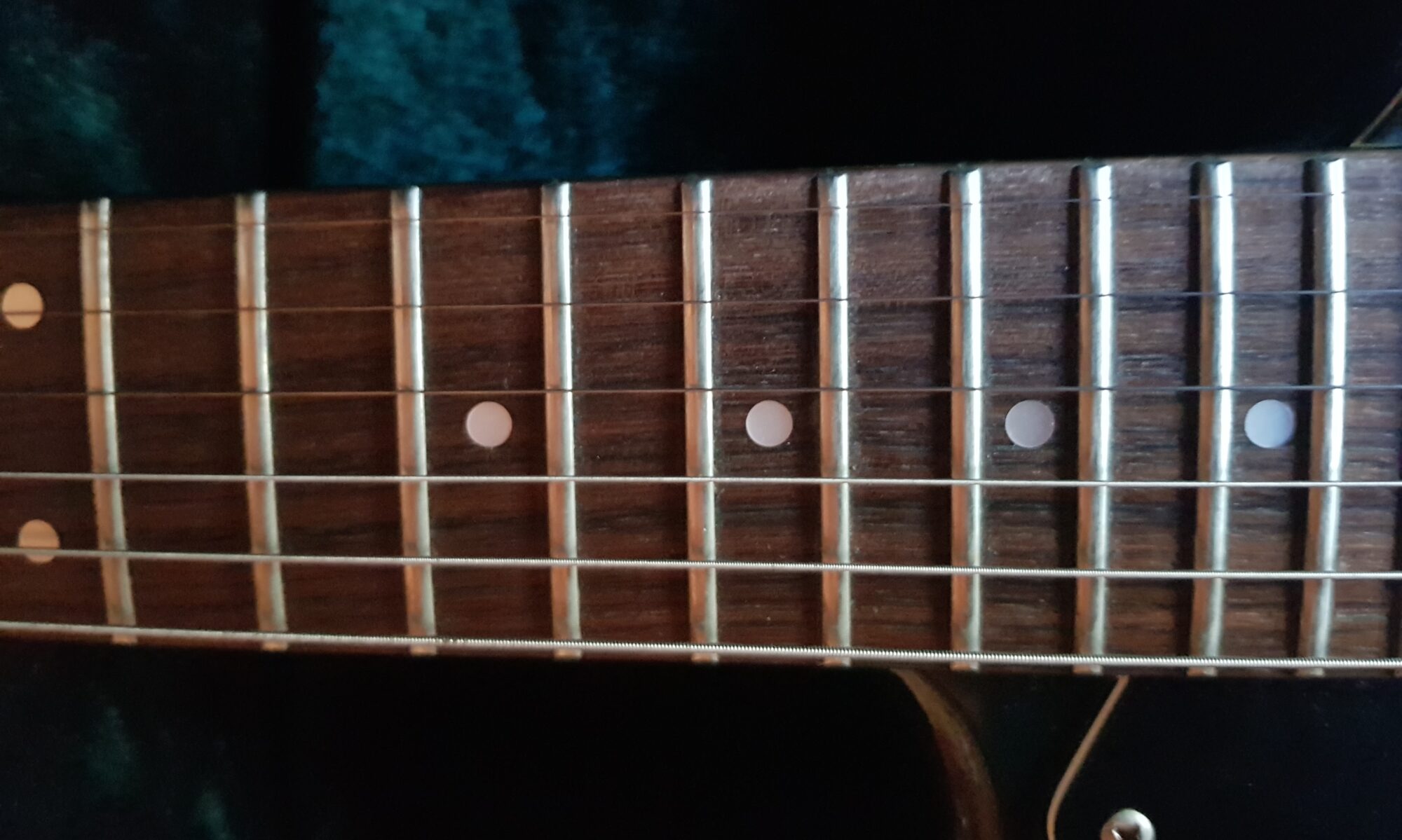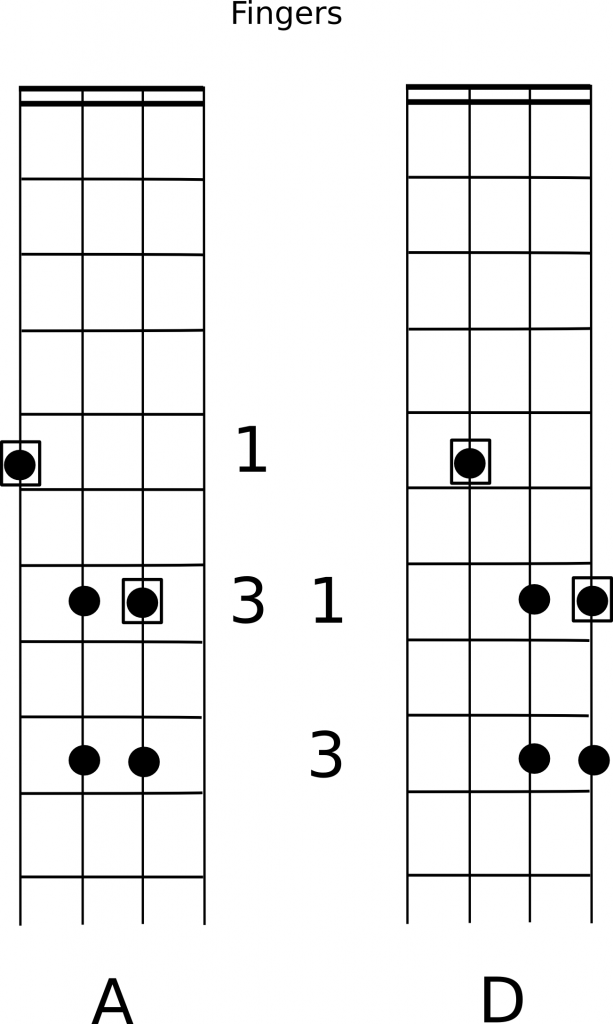This is a practice track for beginning and intermediate bassists in a light rock style, based on a simple two chord progression in the key of F major:
||: F |F |Gm |Gm : ||
There are two rhythm guitar parts, with the guitar in the lower register playing simply on the chords F and Gm. The guitar in the upper register plays a funkier rhythm part, using the chords F6/9 and Gm9.
In the second half of the tune, a lead guitar plays a melody line based on the F major and G minor arpeggios.
To practice your bass playing, try the following approaches:
Beginners:
(1) Play the tonic (F or G) on beat one of each bar
(2) Add the fifths (C and D) to (1) above, playing special attention to the drums, trying to mirror the drum rhythms (especially the bass or kick drum) on the bass.
Intermediate :
(3) It doesn’t hurt to play through once using approaches (1) and (2) above. Then see if you can play through the F major and G minor arpeggios for each chord, for example:
 (4) If you need more challenge, play through the arpeggios using 1 beat notes, for example:
(4) If you need more challenge, play through the arpeggios using 1 beat notes, for example:
 (5) Once you have the arpeggios under your fingers, try a walking bass line. Start at an arpeggio note, and walk up or down the F major scale until you reach the arpeggio note of the next chord. You may have to skip a scale tone to always start beat one on an arpeggio note, as in the following:
(5) Once you have the arpeggios under your fingers, try a walking bass line. Start at an arpeggio note, and walk up or down the F major scale until you reach the arpeggio note of the next chord. You may have to skip a scale tone to always start beat one on an arpeggio note, as in the following:
(6) Play what you think sounds good – using combinations of the ideas above, or using your own creativity.
Here is the track – enjoy!








